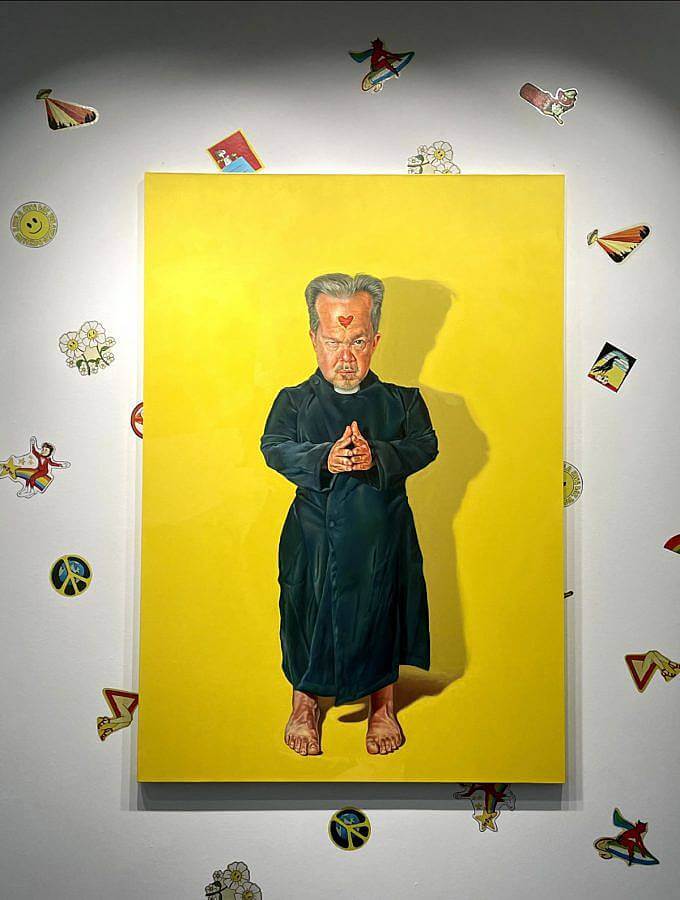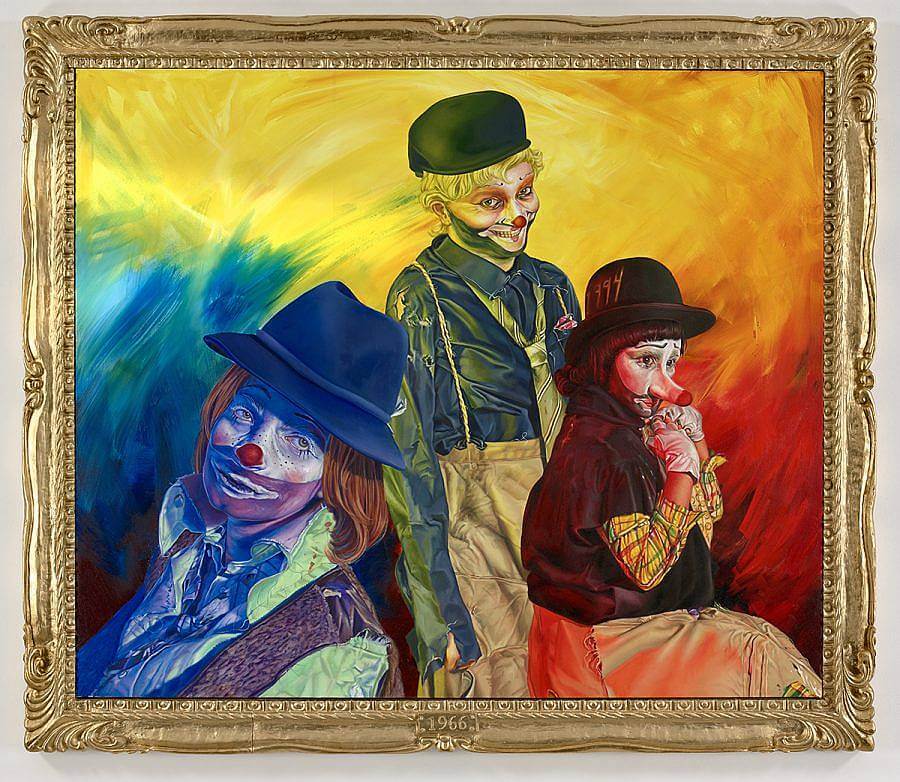How does arranging sets and people play an important part in your paintings?
Performance, movement, and crafting has always been at the root of my work. The final stage is painting, which sometimes that is all that the audience gets to see. But the paintings don’t happen without collaboration with other people. They act as the catalyst for the work. I think it’s important to acknowledge the deep human craving, a craving that far transcends pathology, for story in its most primal form. The sets, costumes, puppets, crafted objects that I make facilitate a level of vulnerability for the people I am working with. Their body language provides the story
Do you have any daily rituals?
I try to watch at least one movie a day.

What materials do you use in your work and what is your process like?
I am primarily an oil painter. But I am less interested in finishing a picture and more determined to feed an idea. Meaning the conceptual thought behind the work will dictate the medium of the body of the work. Recently I have been using the term, a functional regression when it comes to executing new work. Meaning I wanted to revert back to the beginning of how I was making art (from childhood) in order to change how I was approaching painting now. Sounds rudimental but I really focus on reading, watching movies, drawing, sewing, wood working, dancing, and filming. A whole hands on production happens before I even start painting. The reading is research, visually soaking up storytelling, drawing to flesh out a new language, using my hands to craft an object or something wearable, something that can create an extension of oneself, and then have it all move within a body. It’s not a set in stone formula but each stage helps me build the hierarchy of its own world. Then I can start painting.
What artists do you think are making important work?
I am always excited to see what Jana Euler, Janiva Ellis, Jamian Juliano Villani, and Cosima Von Bonin are making. To me they take chances within the work which is always inspiring to see.

Do you ever look back on your older work in order to inform your future?
No, if it does inform me it is happening subconsciously. Doesn’t mean I don’t look back. I do. It is how I got to where I am now. The work changes fast which is indicative to me and my growth.
What was the last show you saw that stuck out to you?
Off the top of my head, Stephanie Heinz’s show at Petzel. She has a painting language that is weirdly cute and aquatic, and also slimy like little monsters. Hard paintings to pull off. I think they are great.

What is your process like in terms of conceptualizing?
A lot of reading and watching movies, and more recently writing poetry. I am a really bad writer so I thought that’s a great reason for me to start writing. Here’s an example: I am working on a 2d animation that is part of a larger body of work titled “F is For Fun”. Carlo Collodi’s Pinocchio, Jung’s Red Book, The Bible, Homer’s Iliad were epic books that I have been referencing. They share the common literary theme of the hero’s journey. I am interested in the cliches and the tropes. The more you watch/read the more obvious they become. For story boarding my animation “eating” research was about the highs and the lows. Reading the Bible and watching SpongeBob, who’s to say which is which. The second half of conceptualizing my animation was using my body. Actually running around playing out the motions, creating choreography. If I am thinking about how Achilles dragged Hector’s body by rope and chariot, I will find a way to see how that feels in my own body.
What are you really excited about right now?
At the moment I am excited about dance, and shoes.

In regards to your making, what is something that you’ve always wanted to do and are working towards achieving it?
A 3d animation. But really, I always say, I am going to make a movie one day. I don’t know what that’s going to look like, but I do know it will have animation in it. So I am excited I am working on my first 2d animation now. It’s three minutes in length and titled “No Reply”. So down the road I would like to learn computer animation. If I am going to make something it only makes sense to me if my hands are involved.
Can you share one of the best or worst reactions you have gotten as a result of your work?
A reaction that has always stuck with me was from this piece “Day by Day” . It was in a solo show of mine in Berlin. This older woman at the opening after seeing it asked me if I was Polish. I said no, she said, “have you ever been to Poland?” No, I replied, never. And she continued, “Wow, this really feels like my home country. I have never seen a painting that captures Poland as well as this one.” She then took a selfie in front of it.

Interview conducted and edited by Liam Owings
